#scheidegger & spiess
Explore tagged Tumblr posts
Text


A long time before the term was even coined Carola Giedion-Welcker and Sigfried Giedion were a power couple of the art world: as writers, critics and functionaries the two were part of an international network of avant-garde artists and architects, among them Walter Gropius, Constantin Brancusi, Alvar Aalto or Herbert Read. In 1925 the couple settled in Zurich in a Villa located at Am Doldertal 7, a home that remained in the family also after the death of the two: for decades Andres Giedion, one of their two sons, and his wife lived in the villa and for the most part left it unchanged. After Andres’ death in 2013 his wife Monica opened it to the archivists and researchers of ETH Zurich who unearthed a wealth of material, e.g. correspondences, manuscripts, photographs, letters and diaries. The material offers an even deeper perspective on the couples’ network and their relationship in particular since they were often physically separated due to their many activities.
These letters form the backbone of the present volume that sums up the careful analysis of the Giedions’ estate: „Die Welt der Giedions - Sigfried Giedion und Carola Giedion-Welcker im Dialog“, edited by Almut Grunewald and published by Scheidegger & Spiess in 2019. The book unfolds the multi-faceted cosmos of the couple in views of their house’s interior, facsimiles of their letters or their art collection, exciting peeks into the lives of two exceptional minds. Brief texts contextualize the materials and objects presented but first and foremost they speak for themselves, just like the entire house does as it reflects the curious minds and eclectic interests of its inhabitants: both Sigfried and Carola received their PhDs in art history based on research about late baroque topics and thus baroque statues appear alongside Aalto and Breuer furniture that in turn rest on Berber carpets. At the same time the shelves and tables overflow with books and documents that are framed by works from artist friends.
This liveliness through the overabundance of art, photographs, documents and letters easily electrifies the reader and conveys the brimming lives of two epochal intellectuals. A wonderful book!
#sigfried giedion#carola giedion-welcker#art book#art history#scheidegger spiess#art historians#book
14 notes
·
View notes
Text

4 notes
·
View notes
Text
Fear
Jeannette Fischer: Pain is a constant feature of all your performances. It is ubiquitous —ubiquitous in its silence and its concealment. What is this pain that keeps repeating itself and that you always carry inside you? Marina Abramović: There are different types of pain. The pain changes. At the moment it is in the process of leaving me. There is the pain of rebellion: I began to replace the pencil with the razor blade. My fear of blood was greater than my fear of pain from a wound. It was then that I realized that I had to confront my fears, which liberated me from my fear of blood. That runs through all my work. In the performance Rhythm 0, I risked being killed. I tempted fate. Works Cited Abromović, M., & Fischer, J. (2018). Psychoanalyst meets Marina Abramović. Vienna, Austria: Scheidegger & Spiess.
5 notes
·
View notes
Text
Wk 12, 27th of April, 2024 Artist Reference
Kiki Smith: Portraits, Celestial Bodies, and Fairy Tales
From the text: Kiki Smith- Hearing you with my eyes by Scheidegger and Spiess…

Close detail of Kiki Smith, Silver Moon, 2023, medium: sculpture, bronze with gold and Japanese silver leaf, size varies
Kiki Smith has been known since the 1980s for her multidisciplinary work that explores embodiment and the natural world.
She uses a broad variety of materials to continuously expand and evolve a body of work that includes sculpture, printmaking, photography, drawing, and textiles. In the early 1990s Smith began depicting the natural world, starting with birds, and her art grew more mythological and folkloric. In these works, a menagerie of real and mystical creatures, delicate plants and shooting stars are presented to us in an astonishing abundance of materials.
“Certainly part of what you can do in art or in the space of art is demystify the world, which doesn’t make the world less meaningful or any less inexplicable or magical but just that you have access to it and have more expirence of it.” - Kiki Smith
Endlessly inventive, Smith has fashioned animal assortments in bronze, shells from gold, frogs from coloured glass, birds from beads, sea creatures from ink and flowers from precious silver.

Kiki Smith, Silver Moon, 2023, medium: sculpture, bronze with gold and Japanese silver leaf, size varies

Kiki Smith, Little Mountain, 1996, medium: cast glass, 3.19 x 4.19 x 2 in. (8.1 x 10.6 x 5.1 cm.)
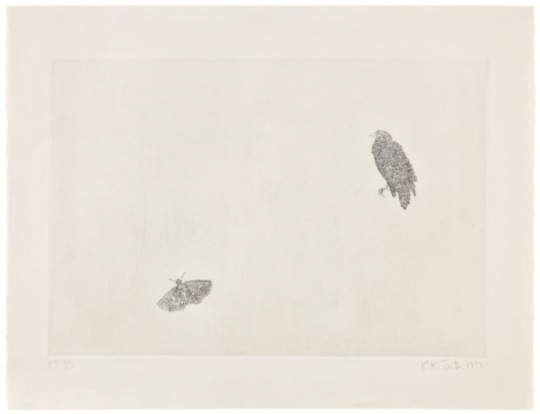
Kiki Smith, Untitled (Bird and Butterfly) (W. 98), 1998, medium: etching and aquatint, on Rives Lightweight paper, with full margins, 36.8 x 54.6 cm. (14.5 x 21.5 in.)
“Everyone’s figured out all the technology, how to combine different kinds of material together—you don’t have to make anything up. You just have to pay attention to what’s discarded, or disregarded … I like looking, seeing everything that everybody already knows and using it. Or you start making things, and then they start explaining to you while you’re making them, telling you more and more what it is that you’re doing.” - Smith
“Materials do things to you physically. Traditional materials do have a heavy historical baggage. But they also have this physiological aspect: different materials have psychic and spiritual meaning to them.” - Smith

access here: https://www.theparisreview.org/blog/2017/03/22/portraits-celestial-bodies-and-fairy-tales/?utm_source=pinterest&utm_medium=social
0 notes
Text
This book offers a discovery: for the first time a comprehensive monograph explores the entire oeuvre of photographic artist Jan Groover (1943–2012), whose personal collection in 2017 was transferred to Musée de l'Elysée in Lausanne.
Published to coincide with an exhibition at Musée de l'Elysée in fall 2019 and generously illustrated, Jan Groover, Photographer: Laboratory of Forms traces the artist's career from the beginnings in America to her late years in western France. Having started her career as a painter, when she turned to photography in the 1970s she developed a distinct artistic attitude that saw her amalgamate the disciplines of photography and painting. She was especially known for her carefully composed photographic still-lifes. Essays on her life and work, her significance as an artist, alongside a very personal contribution by her husband, French artist and critic Bruce Boice, complement the images.
0 notes
Text
LiB Jg. 36 Heft 145: Sophie Taeuber-Arp – eine Rezension über "Briefe von Sophie Taeuber-Arp an Annie und Oskar Müller-Widmann ", von Bernhard Rusch
LiB Jg. 36 Heft 145: Sophie Taeuber-Arp – eine Rezension über “Briefe von Sophie Taeuber-Arp an Annie und Oskar Müller-Widmann “, von Bernhard Rusch
LiB Jg. 36, Heft 145 LiB Jg. 36 Heft 145: Sophie Taeuber-Arp – eine Rezension über “Briefe von Sophie Taeuber-Arp an Annie und Oskar Müller-Widmann”, von Bernhard Rusch https://literaturradiohoerbahn.com/wp-content/uploads/2021/12/LiB-145-Sophie-Taeuber-Arp-Bernhard-Rusch-upload-.mp3 Das Basler Ehepaar Annie und Oskar Müller-Widmann begann schon früh, expressionistische Kunst zu sammeln, und…

View On WordPress
#Annie Müller-Widmann#Annie und Oskar Müller-Widmann#Bernhard Rusch#LiB Jg. 36 Heft 145#Scheidegger & Spiess#Sophie Taeuber-Arp#Uwe Kullnick
0 notes
Photo










Minoru Onoda
Edited by Anne Mosseri-Marlio. With essays by Edward M. Gómez, Astrid Handa-Gagnard, Shoichi Hirai, Koichi Kawasaki, and Takesada Matsutani
Scheidegger & Spiess, Zürich 2018, 232 pages, 176 color and 7 b/w illustrations, 24 x 30 cm, ISBN 978-3-85881-821-8
euro 68,00
email if you want to buy [email protected]
First-ever monograph on Japanese artist Minoru Onoda, a distinguished member of the radical Gutai artistic movement in the 1960s and 1970s
Minoru Onoda is best known as a member of Gutai, Japan’s first postwar radical artistic movement, which challenged what it saw as the rigid, reactionary ideologies of the art of the time and initiated new ones that redefined the relationships among matter, time, and space. Concurrently to the inception of Gutai, Onoda became enchanted by concepts of repetition, producing paintings and drawings with amalgamations of gradually increasing dots and organically growing shapes. But less is known in the West about Onoda’s early and late-career work.
At long last, this first-ever full monograph on Minoru Onoda introduces him as an artist in his own right. Apart from his role with Gutai, the book mines Onoda’s sketchbooks and completed works to explore his creative process over time, from his artistic education in the late 1950s at the Osaka Institute of Fine Arts and the Osaka School of Art to his later works following the 1972 disbanding of Gutai, which see the artist moving toward a monochrome and more conceptual style.
30/03/23
orders to: [email protected]
ordini a: [email protected]
twitter: @fashionbooksmi
instagram: fashionbooksmilano, designbooksmilano tumblr: fashionbooksmilano, designbooksmilano
8 notes
·
View notes
Link
Hervorragender Einblick in die großen Themen Kolumbiens
Colombia – On the Brink of Paradise von Luca Zanetti aus dem Verlag Scheidegger & Spiess gelingt in beeindruckender Weise, beim Leser Sympathie für ein Land zu entfachen, das in den Nachrichten aus aller Welt eher für negative Schlagzeilen sorgt. Es verstört, entsetzt, überrascht und es gibt neue Hoffnung. Dazu ist es noch prächtig hergestellt und ausgestattet. Ein Gewinn für jeden Bücherfreund. 5 Sterne in der Rezension!
0 notes
Text
Sigurd Lewerentz, 20th Century Swedish Architect
Sigurd Lewerentz Architect Stockholm, Modern Buildings Sweden, Swedish Design Projects, Woodland Cemetery
Sigurd Lewerentz Architect : Architecture
20th Century Swedish Architecture Practice: Modernist Buildings in Sweden, Europe
27 May 2021
Sigurd Lewerentz Architect Monograph
Major Building by this 20th Century Swedish Architect
Sigurd Lewerentz: Architect Of Death And Life
Major new monograph of Sweden’s most revered architect
Accompanying exhibition at ArkDes, Sweden’s national centre for architecture and design, opens 1st October 2021
Published by Park Books, May 2021 Edited by Kieran Long and Johan Örn Co-edited by Mikael Andersson
Thursday 27th of May 2021 – Sweden’s most revered architect Sigurd Lewerentz, regarded as one of the most important and enigmatic figures of modern European architecture, is the subject of a major new monograph, published in May 2021 by Park Books in collaboration with ArkDes, Sweden’s national centre for architecture and design in Stockholm.
This vast new book offers the most comprehensive survey to date of Lewerentz’s achievements, newly researched from original objects and archival material uncovered across Sweden, featuring over 700 pages of photographs, drawings, and sketches with essays by leading experts exploring Lewerentz’s life, work and legacy.
Edited by Kieran Long, Director of ArkDes, and Johan Örn, curator of collections at ArkDes, and co-edited by Mikael Andersson, architectural historian and critic, this landmark book will be a significant moment of reassessment. An accompanying exhibition opening at ArkDes on 1st October 2021, curated by Kieran Long and designed by Caruso St John, will be the first major monographic exhibition of Lewerentz’s work in over 30 years.
Lewerentz, who was born in Bjärtrå, Ångermanland, in northern Sweden in 1885 and died in Lund 1975, is a mythologised figure in the history of 20th century architecture. Arguably Sweden’s most distinguished modernist, his influence is admired today by a generation of the world’s leading architects.
Architecture devotees from around the world travel to visit his projects, from his late masterpieces St Mark’s Church in Bjorkhagen and St Peter’s Church in Klippan, to Stockholm’s iconic woodland cemetery Skogskyrkogården, now a UNESCO World Heritage site.
Designed by award-winning graphic designer Malmsten Hellberg, this new book features new photography of all of Lewerentz’s major works by the architect and architectural photographer Johan Dehlin, as well as never-before-seen drawings and plans for buildings, furniture and interiors from Lewerentz’s collection at ArkDes.
Kieran Long, Director of ArkDes and Editor of Sigurd Lewerentz: Architect of Death and Life, said: “This monograph is a long-awaited addition to contemporary architecture publishing. There is no Swedish architect with more influence on contemporary architecture today, or with more passionate advocates across the globe, than Sigurd Lewerentz. His work was ubiquitous in the education of all the best architects I had grown up with in my twenty years of writing about, curating and teaching architecture.”
Title Information Sigurd Lewerentz: Architect of Death and Life Published by Park Books in collaboration with ArkDes Eds. Kieran Long and Johan Örn. Co-ed. Mikael Andersson 1st edition, 2021 Hardback
720 pages 23 x 30 cm ISBN 978-3-03860-232-3
Design: Malmsten Hellberg.
New photos of Lewerentz built work: Johan Dehlin.
www.park-books.com
Contributors
Kieran Long has been director of Stockholm’s ArkDes since 2017. Prior to that he established the new Department of Design, Architecture and Digital at the V&A, London.
Johan Örn is an architectural historian and curator of collections at ArkDes.
Mikael Andersson is an architectural historian and critic.
Sigurd Lewerentz
Sigurd Lewerentz was born in the north of Sweden, in Bjärtrå, Västernorrland County, on 29 July 1885, the son of Gustaf Adolf and Hedvig Matilda Lewerentz. He initially trained as a mechanical engineer and an architect at the Chalmers University of Technology in Gothenburg and followed his education with apprenticeships in Berlin and Munich.
When Lewerentz set up an independent practice in Stockholm in 1911, he was joined by his colleague Torsten Stubelius. His first breakthrough came in 1915 when he was awarded first prize in the competition for a new cemetery in Stockholm (The Woodland Cemetery), a proposal created in collaboration with Gunnar Asplund. For the Woodland Cemetery, Lewerentz designed the neoclassical Resurrection Chapel, completed in 1925. A year following his success in the competition of 1915, he won first prize in the competition for a new cemetery in Malmö.
During the 1930s, while Lewerentz was working on the two cemeteries, he made major contributions to the Stockholm Exhibition of 1930 by way of buildings, furniture, and graphic design. Around this time he also realised two major office buildings in Stockholm. He started to design and produce steel windows and other architectural fittings, a side of his practice that gradually absorbed more and more of his time. In the 1940s, he set up his own factory for these purposes in Eskilstuna.
In the mid 1940s Lewerentz oversaw the completion of the Chapels of St. Knut and St. Gertrud, and the Malmö City Theatre – two projects that he had worked on for many years. His notoriety came with the late churches, however: St. Marks in Björkhagen (1960), and St. Peters in Klippan (1966). When Lewerentz died in Lund in 1975, he was regarded as a legend of Swedish architecture.
ArkDes ArkDes, located on the island of Skeppsholmen in central Stockholm, is Sweden’s national centre for architecture and design. It is a museum, a study centre and an arena for debate and discussion about the future of architecture, design and citizenship. It is housed in a beautiful building by Rafael Moneo and more recently ArkDes´ new studio gallery, called Boxen, designed by Dehlin Brattgård Architects.
Park Books Park Books is a European publishing house for architecture and related fields, and an international platform for architectural book projects. Park Books has been established in 2012 as an affiliate of the renowned art, photography, and architectural publishers Scheidegger & Spiess in Zürich and likewise attaches great importance to the design and material quality of its publications.
The books are published predominantly in English and German and thanks to a competent and extensive sales and marketing network, our program is distributed worldwide. The company is independently owned and run by dedicated employees who bring their various strengths and experience to bear on their work.
post updated 4 May 2021
Sigurd Lewerentz Architect – Key Projects
Major Building by this 20th Century Swedish Architect
Chapel of the Resurrection, Woodland Cemetery, Enskede, Stockholm, Sweden Dates built: 1914-34 Architecture competition : 1914 This building design was a collaboration with fellow Swedish architect Erik Gunnar Asplund
Chapel of Resurrection at the Woodland Cemetery in Stockholm, Sweden: photograph : Kalle Söderman, http://kjs.homeip.net, courtesy of Wikimedia commons
Skogskyrkogården (official name in English: The Woodland Cemetery) is a cemetery located in the Enskededalen district south of central Stockholm, Sweden. Its design reflects the development of architecture from Nordic Classicism to mature functionalism. Skogskyrkogården came about following an international architecture competition in 1915 for the design of a new cemetery in Enskede in the southern part of Stockholm, Sweden. The entry called “Tallum” by this couple of young Swedish architects was selected.
Sigurd Lewerentz Buildings
St. Mark’s Church, Bjorkhagen Date built: 1956-60
St. Peter’s Church, Klippan, Sweden Date built: 1963-66
More Sigurd Lewerentz Architect info online soon
Location: Bjarta, Sweden, north east Europe
Sigurd Lewerentz Architect Practice Information
This celebrated Swedish architect was born in 1885 and died in 1975
Sigurd was born in Bjarta, Sweden. Lewerentz and Asplund are generally recognised as two of the greatest Swedish architects of the 20th Century in Sweden, and came to worldwide attention. Most histories of World Architecture reference them and their collaboration – the Woodland Cemetery. Lewerentz was a Swedish Modernist. He died in Lund, Sweden in 1975.
His most celebrated work is surely Skogskyrkogården in Stockholm. The architects’ use of the natural landscape created an extraordinary environment of tranquil beauty that had a profound influence on cemetery design throughout the world.
Skogskyrkogården – Chapel of Resurrection, Woodland Cemetery, Stockholm, Sweden: photo : Arild Vågen, CC BY-SA 3.0 <https://ift.tt/nyd3RQ>, via Wikimedia Commons
The giant dark granite cross at the focus of the vista from the main entrance may have been based on a painting by Caspar David Friedrich, titled “Cross on the Baltic Sea” (1815), however the architects insisted that it was open to non-Christian interpretations.
Swedish Architectural Designs
Swedish Architecture
Swedish Architecture Designs – chronological list
Swedish Architects
Swedish Architecture
Jo¨nko¨ping Bathhouse, Lake Vättern, Jönköping, southern Sweden Design: White Arkitekter photo © Jo¨nko¨ping Bathhouse Jo¨nko¨ping Bathhouse Building in Sweden
20th Century Architecture
Modern Architecture
Modern Architects
Architecture Studios
Buildings / photos for the Modern Swedish Architect Sigurd Lewerentz page welcome
Website: Building
The post Sigurd Lewerentz, 20th Century Swedish Architect appeared first on e-architect.
3 notes
·
View notes
Text
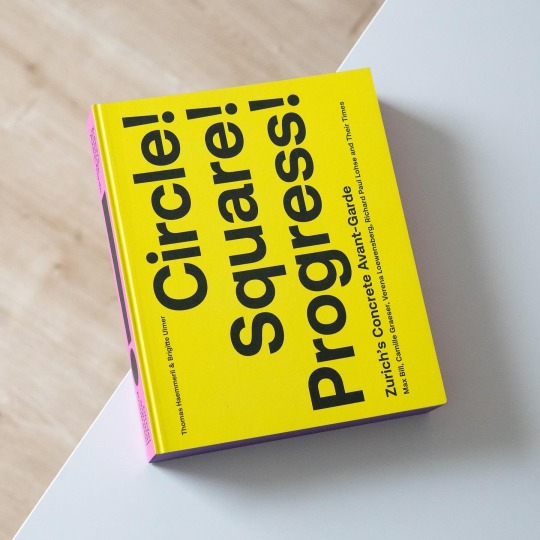
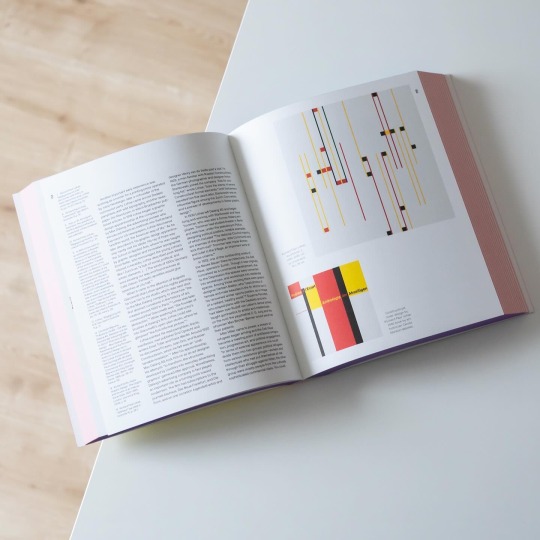
Together with DADA Concrete Art today is considered to most significant Swiss contribution to art history, represented by the quadriga Max Bill, Richard Paul Lohse, Verena Loewensberg and Camille Graeser. But although the life and work of each of the protagonists has been comprehensively researched and published, the actual history of the Concrete Avant-garde based in Zurich in all of its different ramifications has remained somewhat opaque. The director and journalist Thomas Haemmerli and journalist colleague Brigitte Ulmer used this blank space in Swiss art history as point of departure for a complete history of the Zurich Concretists and their complex environment. The result is „Circle! Square! Progress! - Zurich’s Concrete Avant-Garde. Max Bill, Camille Graeser, Verena Loewensberg, Richard Paul Lohse and Their Times“, recently published by Scheidegger & Spiess. The book starts with a history of Concrete Art as coined by Dutch artist Theo van Doesburg and sheds light on the Zurich group’s forefathers and mothers, among them Georges Vantongerloo, Johannes Itten and Sophie Taeuber-Arp but also dedicated patrons like Leo Leuppi. Subsequently Zurich’s „Fantastic Four“, as the Haus Konstruktiv called them in a 2011 exhibition, are portrayed and contextualized in very concise dossiers that portray the artists in their entirety.
But what is particularly noteworthy and interesting is how the authors map the sources of inspiration as well as the network of people and places surrounding the Zurich artists: from mathematics, Bach’s „Art of Fugue“ to Twelve-Tone-Music the manifold influences are carved out and institutions like the Galerie des Eaux Vives, the Bel Etage or the Corso music club are portrayed as meeting points and party locations of the art scene. Beyond this the authors also discuss the afterlife of the artists as omnipresent decorations and players on the art market, an addendum that nicely concludes the book.
As a result „Circle! Square! Progress!“ Provides an equally complete and lively account of the Zurich Concretes’ history as well as their personal network and afterlife. A highly recommended and diverting piece of art history!
21 notes
·
View notes
Text
Rejuvenation: My Bouquet—
Rejuvenation: My Bouquet—
Karen Silve at the Confluence of Courage and Hope
Essay by Richard Speer May 2021
Sometimes beauty alights as gently as dewdrops on the morning grass; other times it has to climb and claw its way up a dark crevasse until against all odds it emerges into the light of day. That latter brand of tenacious, hard-won beauty is central to the origin story of Rejuvenation: My Bouquet, Karen Silve’s sumptuous and inspiring new work.
To say that 2020 was challenging for us all is surely an understatement, yet for Karen Silve, the year was especially grueling. During those twelve months she underwent three surgeries to treat a recurrence of breast cancer (from which she is now fully recovered), with months-long breaks between each surgery to regain her strength before plunging onward to the next operation. During the COVID-19 lockdown, when her litany of surgeries commenced, she found herself socially isolated at precisely the time she would normally have been cared for by friends and family. But into that chasm where direct human contact would have been, a different form of sustenance flowed into her daily life in the form of food and flowers arriving at her doorstep, delivered by a network of loved ones dedicated to fortifying her body and spirit as she navigated her series of crucibles. In a sense, the food and the flowers were linked. Whenever they depleted, more would arrive on the doorstep as replenishment. Silve placed the new flowers in a vase with the older ones and witnessed their collective trajectory from full bloom to gentle bowing to the withering and petal-dropping of senescence. She kept them in the vase long past their prime, for there is beauty too in the shrunken and sere, but at a certain point, as more reinforcements appeared, she removed what was dead and replaced it with new arrivals. And so the bouquet never ended. It was a fount of regeneration mirroring Silve’s own cycles of surgeries and recovery.
Eventually she began painting this bouquet éternel in luscious opulent acrylics on canvas—not literal depictions but composites of visions, memories, photographs, sensations, inhalations of revivifying fragrances borne on air and rising spirits: hydrangea, peonies, poppies, roses, and a dozen-dozen more, rendered in effulgent gestures that never spilt over into surfeit or indulgence, never overworked, but looser, freer, minimalist, luxuriant but also raw. The images are poetic, lyrical, narrative, rhythmic with brushstrokes broad and discreet—elegiac like the richness of life itself as it careens from peak to trough and back again. The flowers are neither feminine nor masculine, but inflected with gray tones that speak to human tenacity, not gendered posturing, like the shades of gray in daily life, bookended by our polarities.
During this period, taxed though her body and spirit were, Silve remained devoted to her yoga practice, attending classes online. Her teacher, Julie Lawrence, gave her “homework assignments” to meditate on the phenomena of courage and hope, the dual life rafts that buoyed her through 2020’s annus horribilis. Simply to get up in the morning, pad into her studio, and paint was a challenge and accomplishment, fueled by hope and grit, requiring not only physical courage but artistic courage, too: Were these paintings too raw? Not raw enough? Were they relevant amid the larger spectre of COVID wreaking global havoc? Were they honest and true? The doubts ebbed and flowed. She kept painting. Many of her compositions she infused with lavender hues, which seemed to symbolize hope and the fortitude it requires. The paintings’ contrasts between silky dark passages, soothing grayscale, and bold, resplendent, sun-soaked hues bursting forth from the picture planes work together in dynamic synergy. In the finished works, execution and concept come together in these paeans to rejuvenation embodied in an inexhaustible parade of flora, a bounty of positivity even during an era of masks, distancing, and fear. This exhibition celebrates friendship, love, compassion, and commitment. It admonishes us to summon our strength, stick with the program, and keep moving forward—to endure, to emerge, and finally to flourish.
“Rejuvenation: My Bouquet��� Karen Silve at the Confluence of Courage and Hope”
Opens on May 21-July 3, 2021
Calloway Fine Art & Consulting 1643 WISCONSIN AVE NW, WASHINGTON, DC 20007 www.callowayart.com (202) 965-4601
—Richard Speer is an art critic, author, and curator based in Portland, Oregon. His most recent book is The Space of Effusion: Sam Francis in Japan (Scheidegger & Spiess), a companion publication to the forthcoming exhibition Sam Francis and Japan: Emptiness Overflowing, which he is co-curating with Hollis Goodall and Leslie Jones at the Los Angeles County Museum of Art. His essays and reviews have appeared in ARTnews, Art Papers, Artpulse, Visual Art Source, Art Ltd., Salon, Opera News, Newsweek, The Chicago Tribune, and The Los Angeles Times. For more information, please visit www.richardspeer.com
images ©2021, Karen Silve Art® text ©2021, Richard Speer
#portland artist#contemporary abstract painter#Richard Speer#Karen Silve#Floral paintings#covid paintings
2 notes
·
View notes
Photo

Tulipes de la série “Blumenmeer” - Anna Halm Schudel
Blossom paru chez Scheidegger & Spiess (livre rétrospective)
“Au fil des pages, on découvre une écriture photographique singulière, immersive et intime. Les fleurs sont capturées à chaque instant de leur vie, du bouton qui éclot jusqu’au bouquet fané.” Nature morte de fleurs / clichés pris sous l’eau - Clara Debailly, étapes n°253 p.151, 2013-2014, Design végétal et ornement
“Quelle est la proximité de la fleur et de l’image lumineuse, qui ne peuvent surgir que par la lumière - la photographie a besoin du rayon tout comme la plante pour sa photosynthèse.” Anna Halm Schudel
L’artiste se rapproche de l’art pictural en ne montrant que des tâches du sujet, la fleur ne reste perceptible par sa couleur et sa forme comme Monet a peint les Nymphéas en ne gardant que leurs formes et leurs teintes.
http://www.fotoschudelhalm.com/blumenmeer.php
https://likeyou.com/events/anna-halm-schudel-blumenmeer/
1 note
·
View note
Text
Citations
1. Abache, Ludwig. “Thermal Baths Vals .” Galinsky, 2007.
2. Martin, Pol. “Vals Thermal Baths.” Arc Space, 17 Nov. 2014.
3. O'Grady, Elena. “The Therme Vals / Peter Zumthor.” ArchDaily, ArchDaily, 11 Feb. 2009.
4. Souza, Eduardo. “Peter Zumthor's Therme Vals Through the Lens of Fernando Guerra.” ArchDaily, ArchDaily, 30 Oct. 2016.
5. Zumthor, Peter, and Binet Hélène. Peter Zumthor Works: Buildings and Projects 1979-1997. L. Müller, 1998.
6. Zumthor, Peter, et al. Peter Zumthor - Therme Vals. Scheidegger Et Spiess.
1 note
·
View note
Photo

Signing my latest monograph, Fifty Years of Looking Good, published by Scheidegger & Spiess. You can get a signed copy on my website. 💥#books #monograph #nonfiction #artistsofinstagram #foundation https://www.instagram.com/p/CiswyjFpxRs/?igshid=NGJjMDIxMWI=
0 notes
Photo
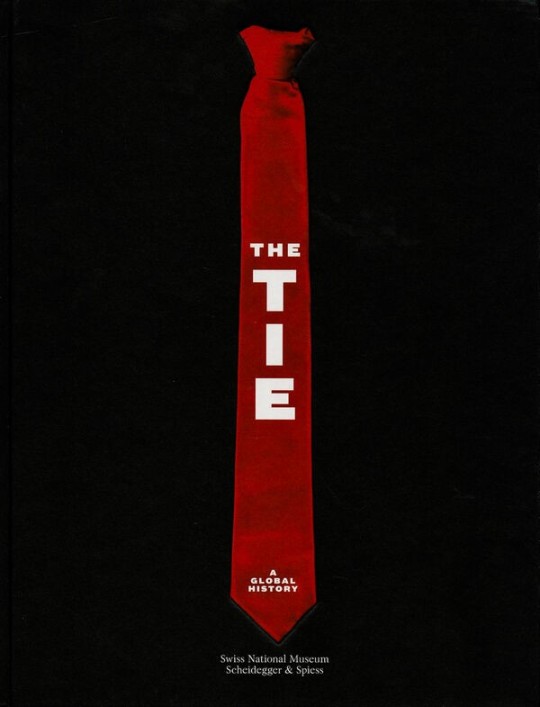

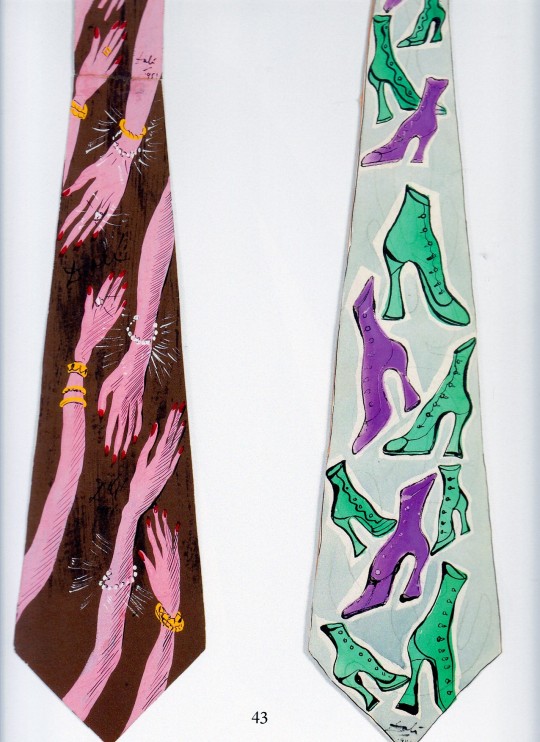

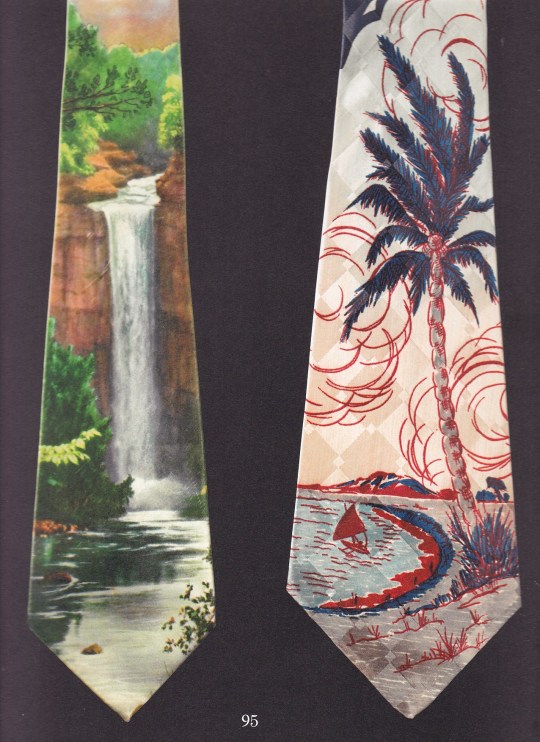
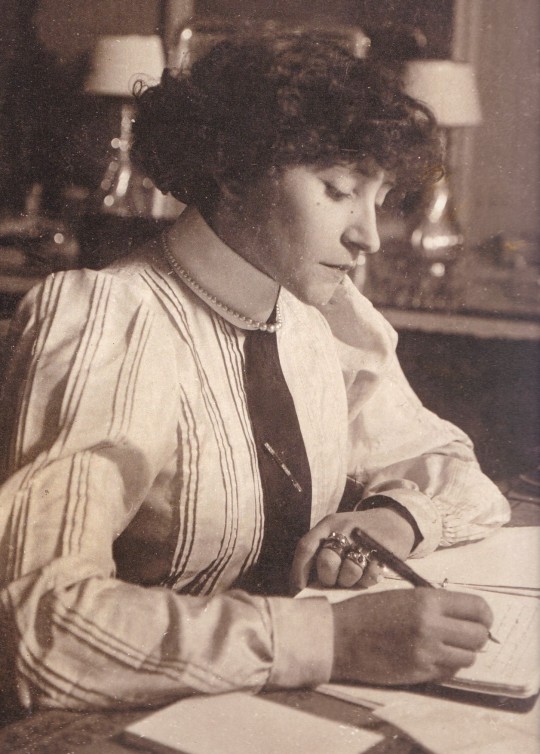




The Tie
A Global History
Edited by the Swiss National Museum in Zürich
With Essays by Francina Chiara, Markus Ebner, Andrea Franzen, Anna Lisa Galizia, Joya Indermühle, Thomas Isler, Leonardo R. Koos, Alan Prada, Alexis Schwarzenbach, Christina Sonderegger, Andreas Spillmann, Luca Tori, Nic Ulmi, Philip Ursprung, and Martin Widmer
Scheidegger & Spiess, Zürich 2014, 280 pages, 148 color plates, 25 halftones, Hardcover, English, 27,3 x 34,6 cm, ISBN 978-3-85881-758-7
euro 30,00
email if you want to buy :[email protected]
A tie reveals a lot about its wearer, his social position, his aesthetic tastes or political stance. From the early 17th until the beginning of the 20th century, a diverse combination of fabrics, colours and knots adorned the male - and occasionally also the female - neck.
Today, the tie is back in fashion and as an accessory newly interpreted, traditions are questioned, and so is the appropriate context for wearing a tie. This new book draws on the vast collection and archives held at the Swiss National Museum in Zurich.
Coinciding with a major exhibition at the museum, The Tie features a wealth of images documenting the history and ever changing aesthetics of the neck tie, but also of designers' and manufacturers' sample collections, art works, and a photographic essay by Swiss photographer Walter Pfeiffer. Essays are contributed by international authors including scholars, fashion critics, and journalists.
07/01/23
orders to: [email protected]
ordini a: [email protected]
twitter: @fashionbooksmi
instagram: fashionbooksmilano, designbooksmilano tumblr: fashionbooksmilano, designbooksmilano
#The Tie#fashion exhibition catalogue#Swiss National Museum Zurich 2014#fashion accessories#Walter Pfeiffer#cravatta#fashion books#fashionbooksmilano
11 notes
·
View notes
Text


As an overarching principle order played an important role in Le Corbusier’s oeuvre: in the sense of Ancient Greece it represented a sign of creation and its maintenance a sign of morality. Against this background the current exhibition „Le Corbusier - The Order of Things“ at Centrum Paul Klee elaborates on the meaning of order for Le Corbusier and offers comprehensive overview of his entire output from an artistic perspective. Alongside the exhibition Scheidegger & Spiess published the eponymous and exceptionally beautiful catalogue that collects Corbu’s drawings, paintings, books, texts, built and unbuilt projects. In addition, experts like Tim Benton and Arthur Rüegg as well as curator Martin Waldmeier in their essays address numerous aspects related to Le Corbusier’s research, painting and drawing processes that precede and supplement his architectural designs.
What is immediately striking is the sheer diversity of Le Corbusier’s creative process and the very fact that our image of him is fragmentary: his „recherche patiente“ was aimed at a synthesis of the arts that covered all of the aforementioned aspects and resulted in extensive and diverse bodies of work that are rarely considered side by side.
He regarded his research as a key to his work and the exhibition as well as the catalogue document that this indeed was true: Corbusier’s central concern was the aesthetic experience that added to or even overruled his preference for the rational, pragmatic and analytic. Throughout his career he carried out his artistic work in parallel to his architectural work as an impulsive, sensual research that threw a bridge to architecture.
With „Le Corbusier - The Order of Things“, which runs through June 22, the Centrum Paul Klee on the occasion of its 20th birthday offers the rare opportunity to discover Le Corbusier’s complex and fascinating artistic work. While his architecture cannot be considered without his „recherche patiente“ it is often only regarded as a footnote to his architecture, a notion that the exhibition and the accompanying catalogue revise and rebut. A highly recommended read that offers a multitude of cues for further research!
27 notes
·
View notes